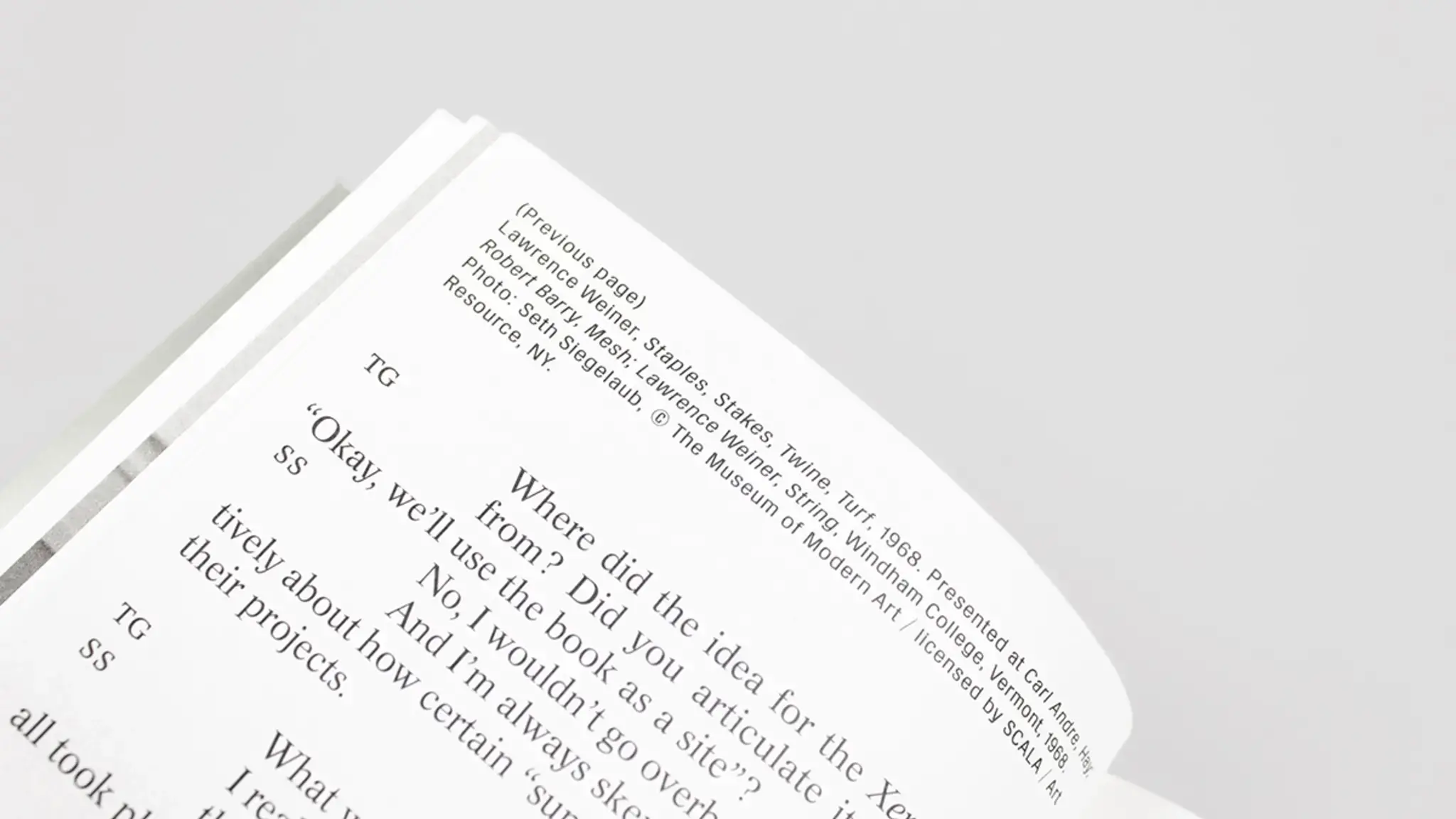The Center's new publication, Site Read: Seven Curators on Their Landmark Exhibitions, published by Mousse Publishing, is an anthology of essays from exhibition makers who illuminate the site-based innovations in now-iconic exhibitions they organized.
Below is an excerpt from a 2012 conversation featured in the book between curators Seth Siegelaub (1941-2013) and Teresa Gleadowe on Siegelaub's shows at Bradford and Wyndham Colleges (1968); The Xerox Book (1968); and the January, March and July, August, September shows (1969). Siegelaub played a vital role in the emergence of Conceptual art in the late 1960s, organizing experimental outdoor shows and innovating exhibitions in the form of publications. In Site Read's introduction, Bruce Altshuler further discusses Siegelaub's "exhibitions-as-catalogues."
Order the book from Barnes and Noble or Mousse.
Excerpt: “Site in Context: Seth Siegelaub in conversation with Teresa Gleadowe”
Excerpt from interview that took place at Raven Row, London, April 19, 2012.
Teresa Gleadowe
The January show [January 5–31, 1969] is featured as a very significant exhibition in the last chapter of Bruce Altshuler’s The Avant-Garde in Exhibition. And other shows that you made, including the March show and July, August, September 1969, are similarly celebrated. Perhaps this is because—looking back—they seem to have the intention of revealing, demystifying, precisely what it is that constitutes the work of exhibition making.Seth Siegelaub
Yes, but it’s also because a lot of people look back to our generation—maybe the same way we look back nostalgically to the 1920s or the 1930s, or Café Voltaire—as a more perfect, simpler time when you didn’t need lots of money to do creative projects. You didn’t have to apply for grants. You didn’t have to pay two thousand dollars a month for rent. There’s a certain nostalgia to it; the appreciation of some of the projects is contextualized by the false idea of the “good old days.”TG
One of the ways that the story tends to be told, or thought of, is that you conceptualized the project of exhibition making as an artist might. So the whole thing has this feeling of being a conceptual project, which is something that is clearly being taken up in subsequent exhibitions, like Hans Ulrich Obrist’s do it. But what you seem to be suggesting now is that some of these shows grew out of contingencies.SS
I probably did have some vague idea that there was a plan and direction. One of the things that was absolutely critical for me was to get away from the promotion of a small group of artists, as great as they may be, and work to elaborate more general kinds of exhibition principles. That was fundamental. I certainly wouldn’t have been able to articulate this idea forty-five years ago, but when I look back, it was definitely what I was doing. So the group of artists becomes larger and larger, less controlled, and finishes with the Studio International project [July/August Exhibition, 1970 (1970)], in which other people do the selecting; I select the critics, and they select the art. And then, eventually, there was the artist’s contract [“The Artist’s Reserved Rights Transfer and Sale Agreement” (1971)] and, you know, antiwar fundraising.TG
You’ve talked before about bars being very important as places where ideas grew, and you’ve talked about the formats of different kinds of exhibitions, and the way that those formats were adapted to the work. And certainly in the interviews you gave in 1969, you made it clear that you were very interested in the way these formats related to the artists’ work, but it strikes me that “site” is not a word you use much.SS
No, the only thing I would use it in reference to was the Windham College show, because that had specific, say, requirements or had to do with using whatever was on the physical site at the time. So in that sense, it is closely related to site. I can’t really say the January show had to do with the rented space on East Fifty-Second Street. To say that it did would be a stretch. Yes, in a certain way the summer show [July, August, September 1969] did have to do with site, but the sites weren’t important. What was important was the catalogue. In other words, you would deal with the catalogue as you would normally deal with a catalogue, except the sites of the exhibition were Niagara Falls or The Hague or wherever the artists were working. In that sense, it was like a catalogue for a world exhibition. And that had to do specifically with site.









